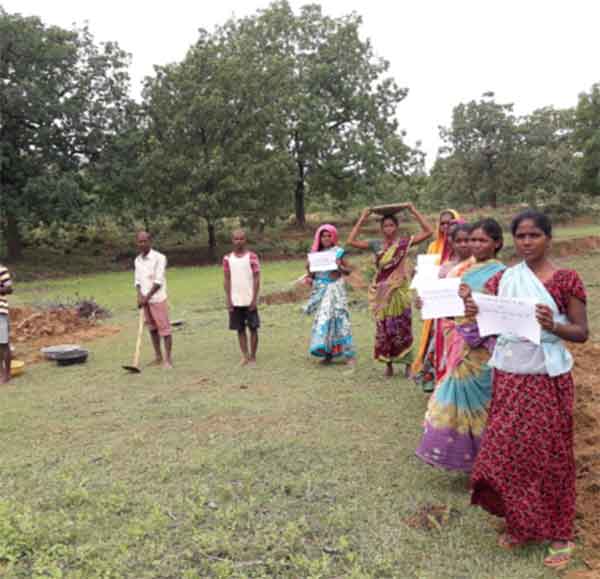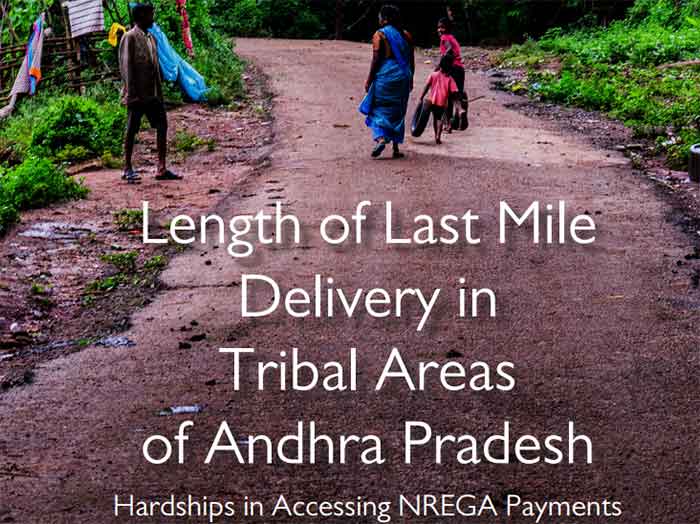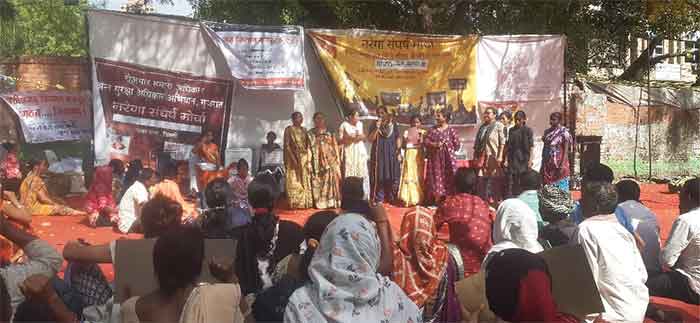
The stress on the economy became evident, especially in the aftermath of the raging pandemic from the 7.3% contraction in GDP in 2020-21. The distress faced by poorer households has continued over a period of time with the pandemic acting as a catalyst in increasing the woes of such households. In a latest round of survey conducted by People’s Research on India’s Consumer Economy (PRICE) revealed that the share of the poorest 20% accounted for 5.9% of the total household income in 1995, which has dropped further to 3.3% in 2021. On the other hand, the share of the richest 20% has jumped from 50.2% to 56.3% in the same period. Such a distress can be addressed to a large extent by NREGA, the public works programme which guarantees 100 days of paid employment to rural households. NREGA Sangharsh Morcha expects a conservative allocation of around 3 lakh 62 thousand crores in the financial year 2022-23 for the effective implementation of the programme. The manner of arriving at the estimation is declared below:
Table 1: Estimated budget required for NREGA in FY 2022-23:
|
Wage Rate |
A |
269/-^ |
|
Number of Active JCs (in Cr) |
B |
9.9 |
|
Wage bill for 100 days (in Cr) |
C=A*100 |
26900 |
|
Wage bill for all JCs (in Cr) |
D=B*C |
266310 |
|
Material Bill |
E=D*30% |
79893 |
|
Material Bill (Centre contribution) |
F=E*75% |
59919.8 |
|
Total Cost (Cr.. Rs..) |
G=D+F |
326229.8 |
|
Admin Bill (Cr.. Rs..) |
H=G*4.5% |
14680 |
|
Last Year Dues** (Cr.. Rs..) |
I |
21361 |
|
Total Estimate (Cr.. Rs..) |
J=G+H+I |
362270.8 |
^Wages calculated by Pre-Budget Statement by Peoples’ Action for Employment Guarantee (PAEG) by taking agricultural wage into consideration
* *Estimation of pending payments for FY 2021-22 done by PAEG.
Leaving aside the legislative obligation to ensure that NREGA functions well, providing resources to improve NREGA will be helpful for the economy in general. NREGA wages would increase disposable income in rural areas. This in turn will boost demand and increase consumption. However, the BJP government is intentionally ignoring the programme, year after year.
Drying up of funds: As on 30 January 2022 (R.14.6), 60 percent of wage payments were pending for the month. Every financial year, from the third quarter onwards, the funds for NREGA dry up. As a result, work slows down and delays in wage payments escalate. Every year, about 20 percent of the NREGA budget is used to clear arrears. Within the first half of FY 2021-22, the programme showed a negative net balance condemning workers to “forced labour” by delaying wage payments. This cycle keeps continuing and adversely affects workers in the peak NREGA season in the final quarter of the financial year. NSM has been consistently demanding that budgetary allocation for NREGA should be adequate to meet the legal guarantee of 100 days of work for every rural household demanding work and timely payment of wages.
Delays in wage payments and compensation: While the Ministry of Rural Development (MoRD) claims to have made progress in timely wage payments, large delays in wage payments still plague the programme. According to the report authored by researchers from LibTech India titled ‘Heavy Wait’, only 56 percent of the transactions were successfully completed in 15 days after FTOs were sent to the GoI. The report also stated that the Centre alone was responsible for delays in transferring wages for 71% of the total transactions. Another study by LibTech India, found out that the Centre is taking 26 days on an average to complete the wage transfer to the NREGA workers in Andhra Pradesh. Additionally, despite calculating delays made by the centre in depositing wages, the delays made by the centre are not added to calculate delay compensation. As per R14.1, only 1.76% of payable delay compensation has been paid till 30th January. The centre must fix accountability on the agencies that cause the delays and ensure that workers are compensated for the full duration of the delay in the crediting of wages to their bank account.
Stagnating wage rates: The issue of stagnating wage rates is not new to NREGA. The government’s decision to index the wage rate to the Consumer Price Index – Rural (CPI-R) as opposed to the older Consumer Price Index – Agricultural Labourers (CPI-AL) is a welcome move. However, it has made such an announcement many times in the past and has not acted on it. Also, the change in index will lead to a very meagre increase in NREGA wages since they are very low to begin with. The new indexation will be meaningful if the NREGA wages are at least at par with the minimum wages in the states.
Strengthening gram panchayat planning: The Act had envisioned that gram panchayats would be instrumental in planning what work can be undertaken and what kind of assets can be built based on local needs. With the passing of years, the planning of what work should be undertaken is thrust by the centre. There is a need to ensure that the planning process is bottom-up in nature and gram panchayats have a greater say in deciding the nature of assets.
For further information, please write at [email protected]
















































